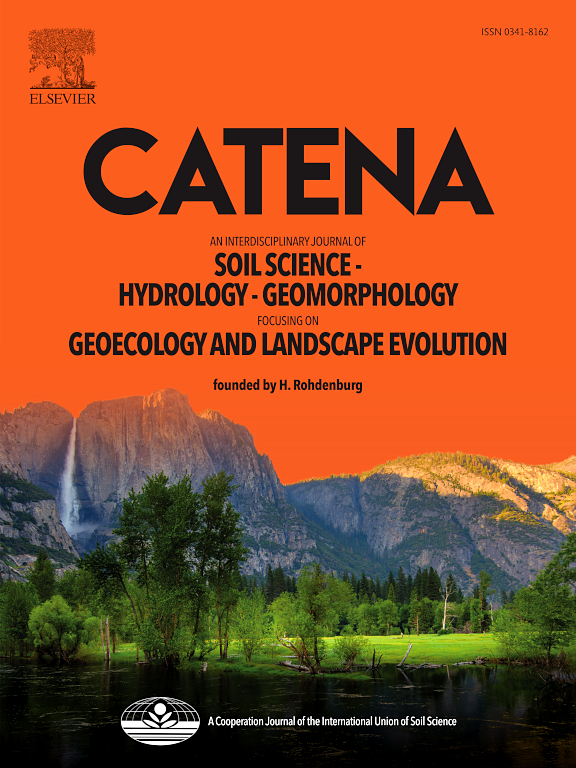Effects and benefits of wind erosion prevention in China’s dryland and surrounding countries
IF 5.4
1区 农林科学
Q1 GEOSCIENCES, MULTIDISCIPLINARY
引用次数: 0
Abstract
Wind erosion forms one of the main causes of land degradation, especially in arid regions with little or no vegetation. It is important to determine the role of vegetation in wind erosion prevention as an ecosystem service (ES). However, the impact of vegetation dynamics on the transmission pathways of dust is still unclear. Taking the dryland of China as the study area, this study analysed the spatial–temporal variability of wind erosion prevention from 2001 to 2020 by modelling the estimated movement of dust and the suppressive effect of vegetation on dust. The results showed that the annual amount of dust prevented was 2865Tg. The wind erosion prevention was higher in the northeast and lower in the southwest. Over the past two decades, wind erosion prevention increased 13% in 2020 compared with 2000. Increased vegetation cover effectively reduces the risk of wind erosion. In addition to China, 18 countries benefited from vegetation to offset dust. This study shows vegetation’s importance in reducing dust transport at a transnational scale.
求助全文
约1分钟内获得全文
求助全文
来源期刊

Catena
环境科学-地球科学综合
CiteScore
10.50
自引率
9.70%
发文量
816
审稿时长
54 days
期刊介绍:
Catena publishes papers describing original field and laboratory investigations and reviews on geoecology and landscape evolution with emphasis on interdisciplinary aspects of soil science, hydrology and geomorphology. It aims to disseminate new knowledge and foster better understanding of the physical environment, of evolutionary sequences that have resulted in past and current landscapes, and of the natural processes that are likely to determine the fate of our terrestrial environment.
Papers within any one of the above topics are welcome provided they are of sufficiently wide interest and relevance.
 求助内容:
求助内容: 应助结果提醒方式:
应助结果提醒方式:


